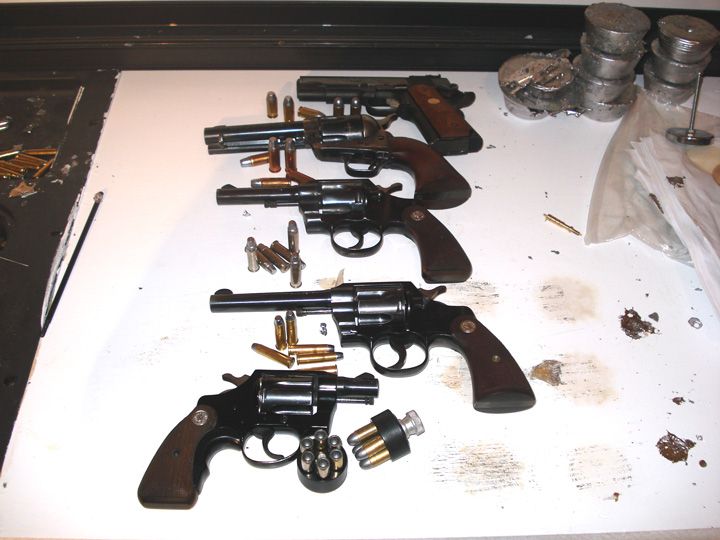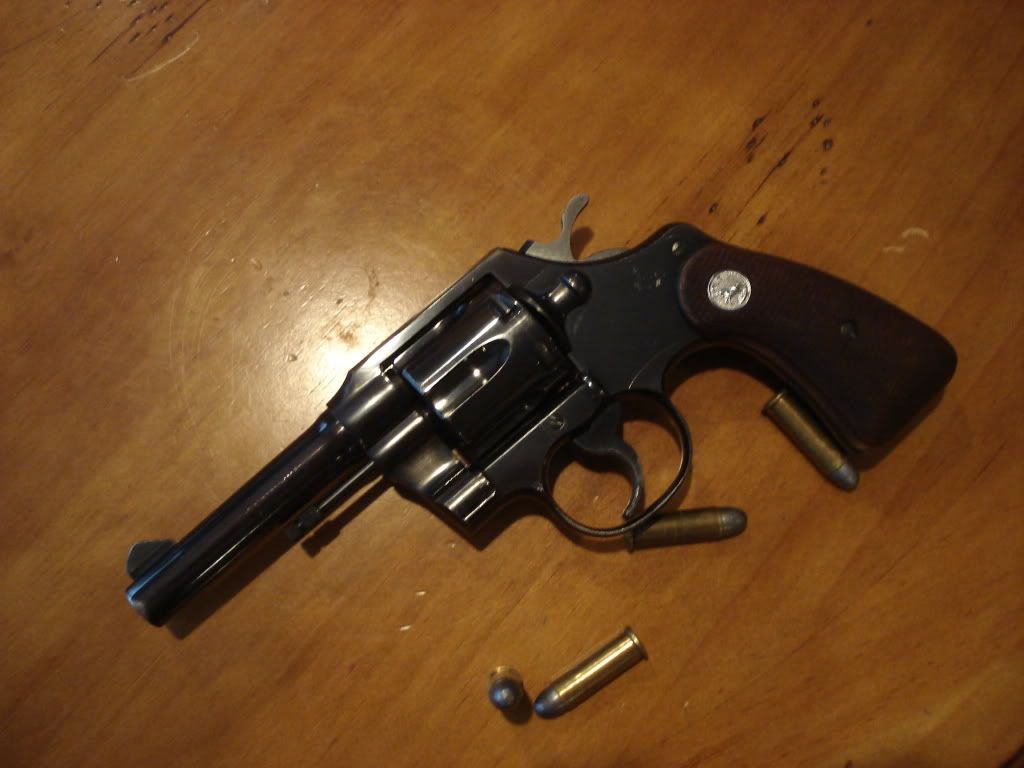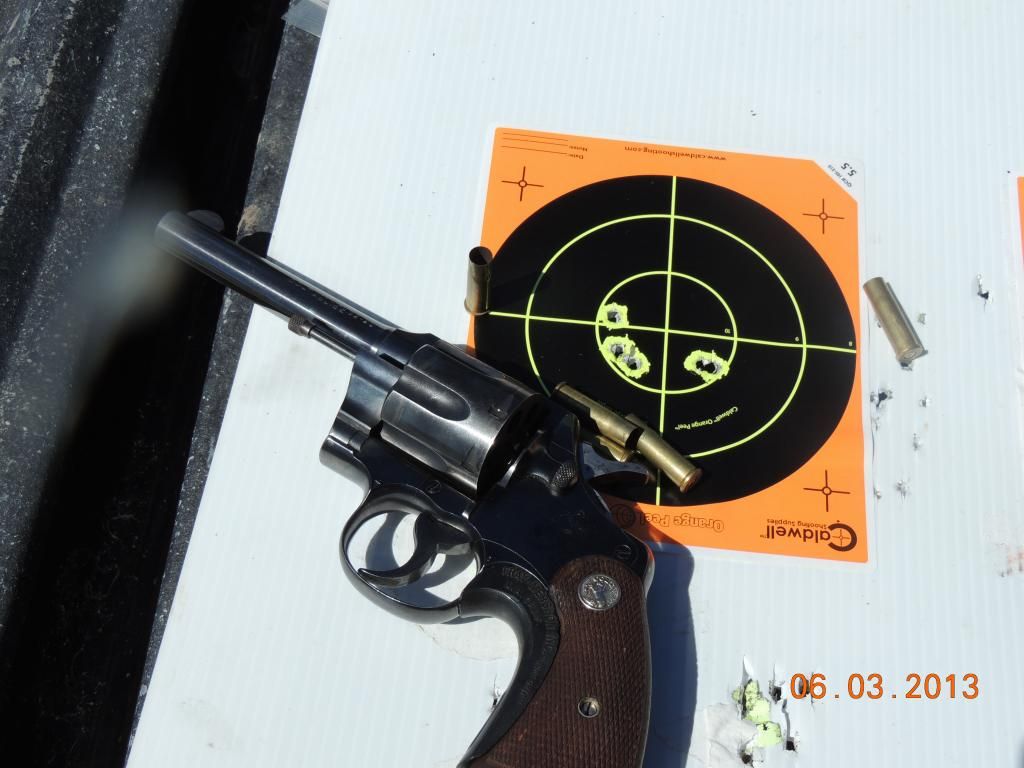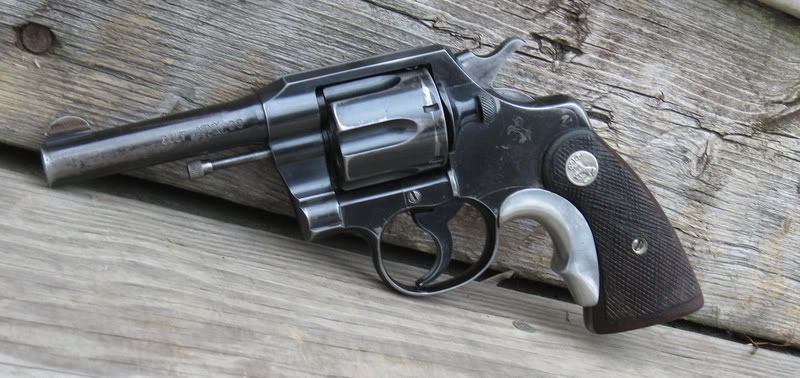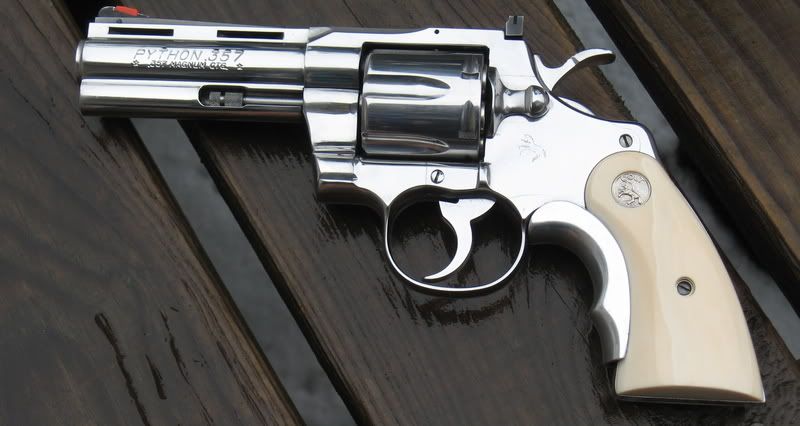It always amazes me how often I read guys saying that Colts are delicate, wear out if you shoot them, break if you shoot them, and they all quickly go "out of time."
Really? Not my experience at all. I shoot my Colts... a lot. Nearly all were well used long before I got them and they all function just fine. The wear visible on the outside is testimony to the hard use some have seen, but they all shoot as they are supposed to do.
Made in 1950. Countless rounds fired. Works great.

Made in 1934. Barrel was lopped off at some point but the action is terrific.

Made in 1931 and used for years by a serious competitor. Maybe hundreds of thousands of rounds through it. Still tight, still "in time."

Made in 1909. Poorly refinished and the barrel swapped long ago, but the action is like silk and it functions like new.

Really? Not my experience at all. I shoot my Colts... a lot. Nearly all were well used long before I got them and they all function just fine. The wear visible on the outside is testimony to the hard use some have seen, but they all shoot as they are supposed to do.
Made in 1950. Countless rounds fired. Works great.

Made in 1934. Barrel was lopped off at some point but the action is terrific.

Made in 1931 and used for years by a serious competitor. Maybe hundreds of thousands of rounds through it. Still tight, still "in time."

Made in 1909. Poorly refinished and the barrel swapped long ago, but the action is like silk and it functions like new.


